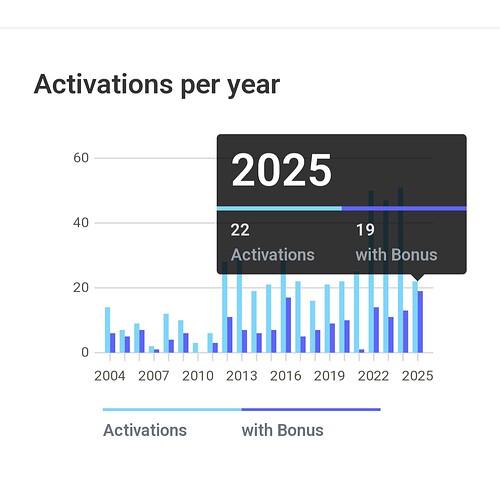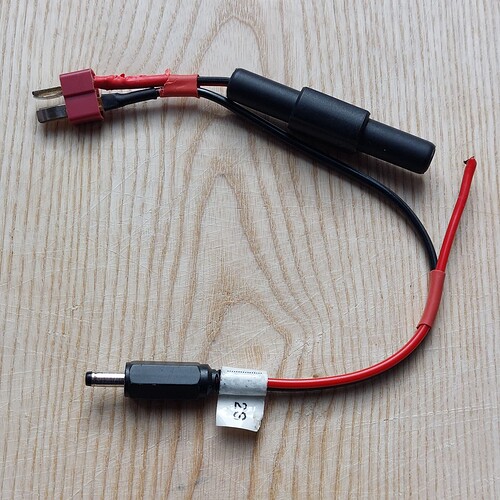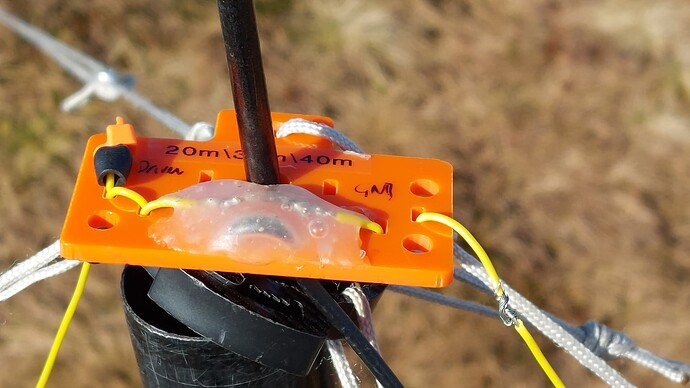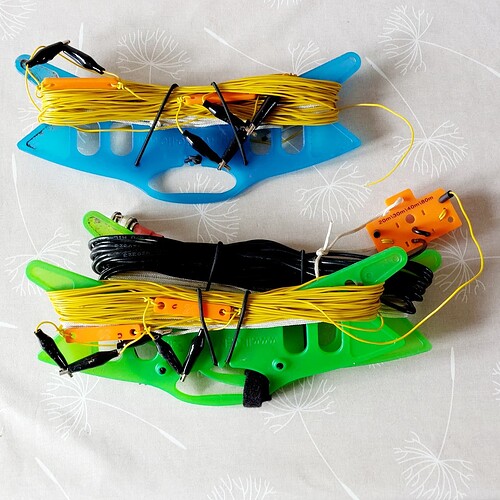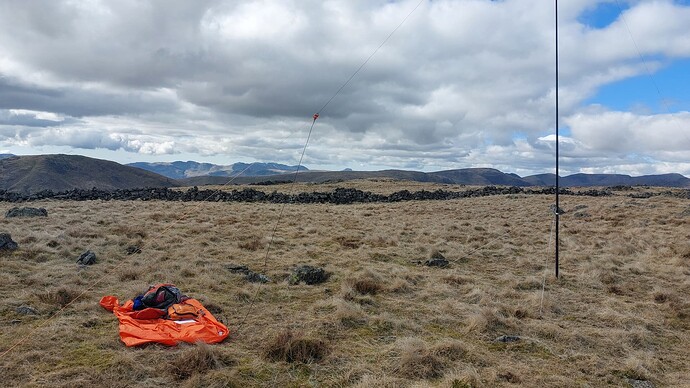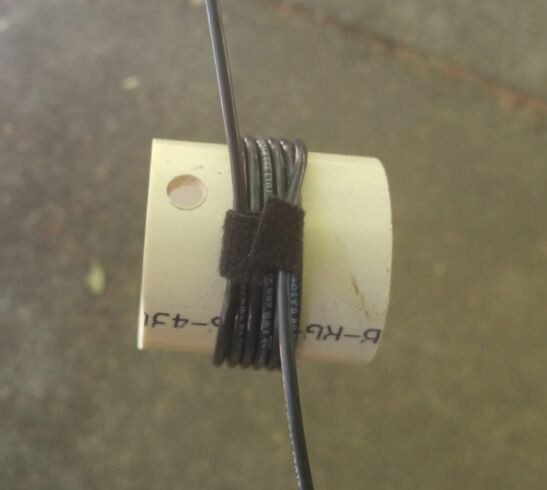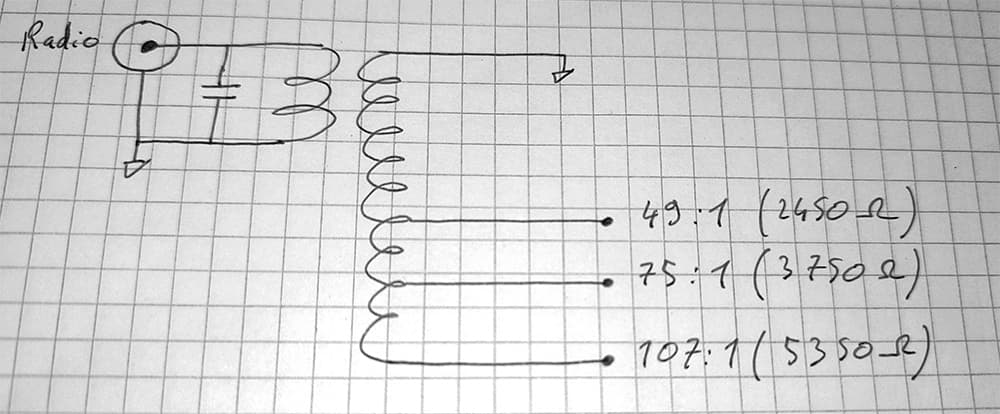Well, that turned out to be my best winter bonus period ever, quite unexpectedly. The weather has been so dry, with a distinct lack of snow. My crampons and ice axe haven’t left the shed this year. It was nice to make double Mountain Goat whilst out with G4TGJ on Fountains Fell on a beautiful sunny day.
I had a bit of a last minute push earning 72 points in the last week of winter bonus, it certainly pushed my average step count up a bit!
I’ve been having a bit of a tough time with my gear since the end of last year, my rigs have been OK but the power leads and my antennas are all failing due to age. I made the power lead for my MTR back in 2012 and I’ve had to resolder it quite a few times recently. I think the actual copper strands have had enough. Now that the winter bonus period has finished, I think that I need to have a period of sorting out my gear. I need to manufacture some completely fresh power cables and antennas.
MTR power cable, broken again!
SOTAbeams Bandhopper 3, failed when I wanted an S2S - I twisted the broken wires together and made the S2S!
SOTAbeams Bandhopper 4 needs fixing
I’m running out of antennas to use now, so I really need to get some made. I’ve been experimenting with end fed half wave antennas but I’m finding it really hard to get the antennas to work on multiple bands. I made a 40m efhw with a link for 30m. The 30m section works great, but I can’t get a tune on 40m that also works on 20m. I’m thinking that maybe I just need to go with links for each band. In most cases I’m struggling to get the VSWR below 1.4:1 at best, altjough I find the VSWR improves as I raise the feed point.
I think I still prefer dipoles over the end fed antennas.
I note that the QMX SSB firmware beta version has been released. The QMX has huge potential to take on the Elecraft KX2. Imagine a trail friendly QMX+ with built in auto-ATU. ![]() Amazing to think that Hans has created such a complex and high performance radio! I have the hi-band QMX, but I think I should have got the mid-band version in hindsight. I got the QMX with SSB in mind. Ultimately I’d like to run a QMX on 40m SSB with an EFHW for bicycle based trips. I’m wondering if I could make a low Z tuner for that final tweak to bring an EFHW closer to 50 ohms for the rig. I think a little tuner in an Altoids tin would be great. I have the ALT tuner based on a design by KD1JV, but I mean just a standard unbalanced antenna tuner in a SOTA friendly package.
Amazing to think that Hans has created such a complex and high performance radio! I have the hi-band QMX, but I think I should have got the mid-band version in hindsight. I got the QMX with SSB in mind. Ultimately I’d like to run a QMX on 40m SSB with an EFHW for bicycle based trips. I’m wondering if I could make a low Z tuner for that final tweak to bring an EFHW closer to 50 ohms for the rig. I think a little tuner in an Altoids tin would be great. I have the ALT tuner based on a design by KD1JV, but I mean just a standard unbalanced antenna tuner in a SOTA friendly package.
Lots of work to do in the M1BUU shack, including installing my new 100Ah lithium leisure battery which I’ve had for a few weeks. I need to reprogram my solar controller with new parameters, which I’ve been putting off!
73, Colin
